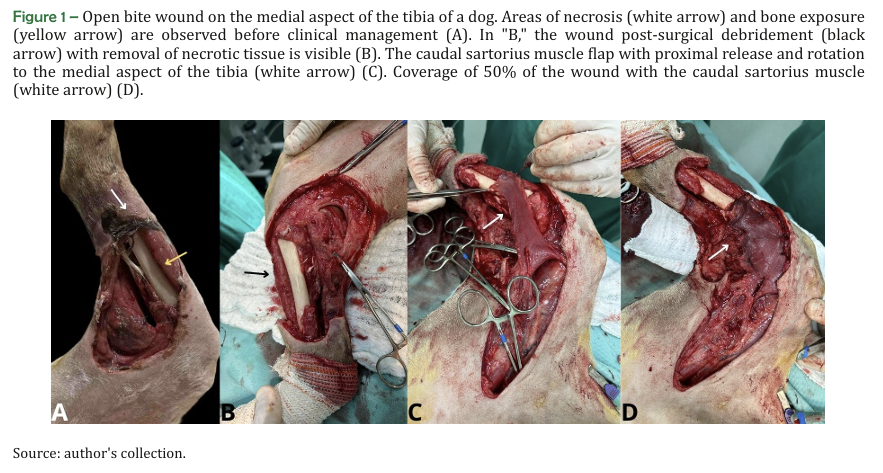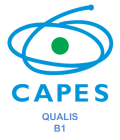Combination of muscular and cutaneous flaps in the management of a tibial wound in a dog: case report
DOI:
https://doi.org/10.21708/avb.2025.19.1.12904Abstract
Muscular and cutaneous axial pattern flaps are described in veterinary medicine as adjuncts in the management of extensive injuries; however, there are few reports demonstrating their use in tibial injuries in dogs. This report aims to describe the use of a caudal sartorius muscle flap and a caudal superficial epigastric axial cutaneous flap for the coverage of a tibial wound in a dog. The animal was a 1-year-old, 25 kg, spayed female Golden Retriever that was presented after being attacked by a Pitbull, showing an extensive wound on the tibia of the right pelvic limb. Blood tests, X-rays, and ultrasound were performed, all of which were normal. The dog was managed for the trauma and the wound was cleaned until the appropriate time for surgical intervention. After 4 days, the caudal sartorius muscle flap and the caudal superficial epigastric axial cutaneous flap were used to cover the defect. Two months after the procedure, complete healing was achieved, and the animal was discharged from the hospital.
Downloads

Downloads
Pubblicato
Fascicolo
Sezione
Licenza
Copyright (c) 2025 Acta Veterinaria Brasilica

TQuesto lavoro è fornito con la licenza Creative Commons Attribuzione 4.0 Internazionale.
Autores que publicam na Acta Veterinaria Brasilica concordam com os seguintes termos: a) Autores mantém os direitos autorais e concedem à revista o direito de primeira publicação, com o trabalho simultaneamente licenciado sob a Licença Creative Commons Attribution que permite o compartilhamento do trabalho com reconhecimento da autoria e publicação inicial nesta revista. b) Autores têm autorização para assumir contratos adicionais separadamente, para distribuição não-exclusiva da versão do trabalho publicada nesta revista (ex.: publicar em repositório institucional ou como capítulo de livro), com reconhecimento de autoria e publicação inicial nesta revista. c) Autores têm permissão e são estimulados a publicar e distribuir seu trabalho online (ex.: em repositórios institucionais ou na sua página pessoal) a qualquer ponto antes ou durante o processo editorial, já que isso pode gerar alterações produtivas, bem como aumentar o impacto e a citação do trabalho publicado (Veja O Efeito do Acesso Livre).


 Esta obra está licenciada com uma Licença
Esta obra está licenciada com uma Licença 